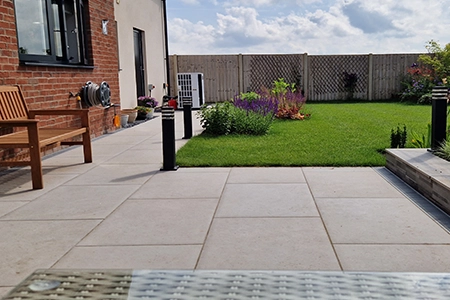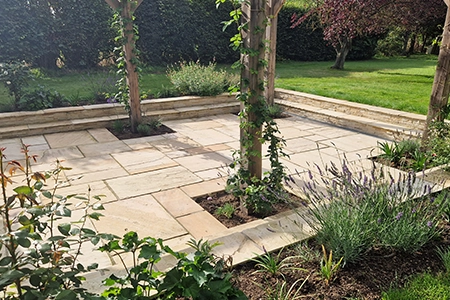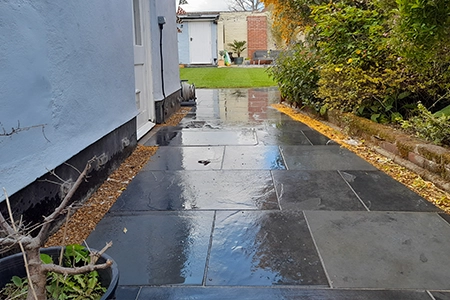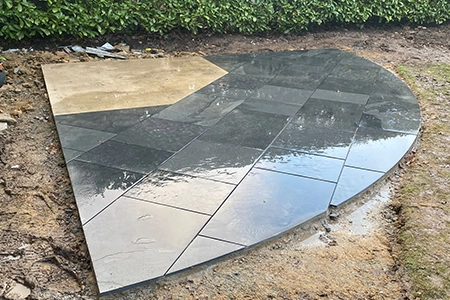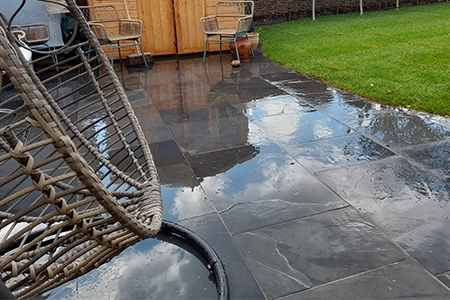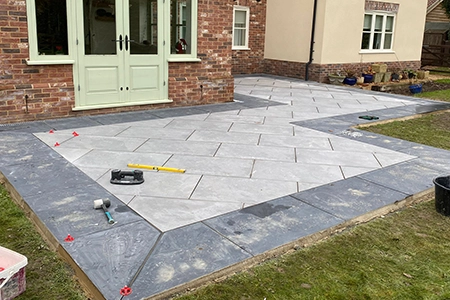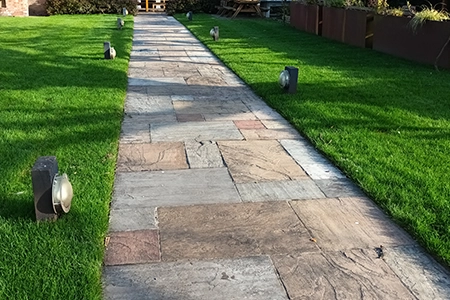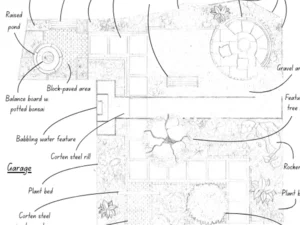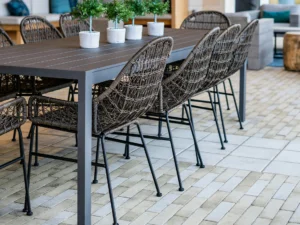Introduction
Expanding your living space into the great outdoors can significantly enhance your home’s appeal and functionality. One effective way to achieve this is by laying a patio. This can provide you with an inviting outdoor area perfect for dining, entertaining, or simply relaxing in the fresh air. However, before you begin this journey you may find yourself wondering how to lay patio. In this comprehensive guide, we’ll explore the ins and outs of how to lay patio, from selecting the right materials to ensuring a durable and visually pleasing result.
Importance of Laying a Patio Correctly
Properly laying a patio is essential for several reasons. Firstly, it creates a stable and level surface that is safe to walk on and supports outdoor furniture, creating a comfortable and functional outdoor living space. Whether you’re hosting a barbecue with friends or simply enjoying a quiet evening outdoors, a well-constructed patio provides a solid foundation for relaxation and entertainment.
Additionally, knowing how to lay patio ensures that the surface is structurally sound and resistant to shifting or settling over time, minimising the risk of accidents or injuries.
Furthermore, a professionally laid patio adds value to your property by enhancing its aesthetic appeal and increasing its overall marketability. Potential homebuyers are often drawn to outdoor spaces that are well-designed and meticulously maintained, and a beautifully laid patio can be a major selling point.
Whether you’re planning to sell your home in the near future or simply want to enhance its curb appeal, investing in a high-quality patio installation is a smart decision.
Moreover, a properly laid patio can withstand the elements and heavy foot traffic, providing years of enjoyment with minimal maintenance. By following the correct techniques and using quality materials, you can create a durable and long-lasting outdoor surface that stands up to rain, snow, and UV exposure.
Additionally, knowing how to lay patio ensures that the surface remains level and free of tripping hazards, preventing costly repairs or replacements down the line. With proper care and maintenance, your patio can continue to look beautiful and perform optimally for years to come, allowing you to make the most of your outdoor living space.
Consequences of Not Knowing How to Lay Patio Properly
On the flip side, neglecting to lay a patio properly can lead to a host of problems that compromise both the functionality and aesthetics of your outdoor space. Uneven surfaces resulting from improper installation can pose safety hazards, increasing the risk of trips and falls for you, your family, and your guests.
Loose pavers or stones may shift or become dislodged over time, creating unstable footing and detracting from the overall visual appeal of your patio. Poor drainage is another common issue that arises when patio installation is not carried out correctly.
Without proper grading and drainage systems in place, water may accumulate on the surface of the patio or seep into the underlying layers, leading to pooling, erosion, and water damage. This not only compromises the structural integrity of the patio but also creates a breeding ground for mold, mildew, and algae, which can pose health risks and detract from the beauty of your outdoor space.
Furthermore, improperly laid patios are more prone to cracking and settlement, especially in areas with freeze-thaw cycles or heavy foot traffic. These structural issues not only detract from the appearance of your patio but also necessitate costly repairs or even complete replacement in severe cases, which is a steep price to pay for not learning how to lay patio properly.
Additionally, gaps or uneven surfaces resulting from improper installation may become havens for weeds, moss, and other unwanted vegetation, detracting from the overall aesthetic and requiring additional maintenance to keep the patio looking its best.
In summary, knowing how to lay patio correctly is essential to avoid these consequences and ensure a functional, durable, and visually appealing outdoor living space for years to come. By investing in proper installation techniques and quality materials, you can enjoy all the benefits of a well-constructed patio while avoiding the pitfalls associated with poor workmanship.
Different Materials for Laying a Patio
When considering materials for your patio, it’s important to explore the wide range of options available to find the best fit for your needs and preferences. Natural stone slabs, including limestone, sandstone, and granite, are popular choices known for their timeless beauty, durability, and versatility. Each type of stone offers its own unique aesthetic appeal, with variations in colour, texture, and pattern that can complement any outdoor space.
Whether you prefer the earthy warmth of limestone, the rustic charm of sandstone, or the elegant sophistication of granite, natural stone slabs provide a durable and long-lasting foundation for your patio. In addition to natural stone, concrete pavers and bricks are versatile options that offer a range of shapes, sizes, and colours to suit any design aesthetic.
Concrete pavers are known for their affordability, ease of installation, and durability, making them a popular choice for homeowners looking to create a stylish and functional outdoor living space. Bricks, on the other hand, exude classic charm and timeless appeal, adding a touch of elegance to any patio design.
Whether you prefer the sleek modern look of concrete pavers or the traditional charm of bricks, both options provide a durable and low-maintenance surface for your patio. Regardless of the material you choose, proper preparation is essential for a successful patio installation.
Knowing how to lay patio starts with creating a sturdy base and ensuring proper drainage to prevent issues such as settling, cracking, and water damage. By investing in quality materials and following best practices for installation, you can create a beautiful and functional patio that enhances your outdoor living experience for years to come.
To find out more about which options may be available to you, including their benefits and drawbacks read our blog article, that has been specifically designed to give you honest and in detail guidance.
Choosing the Right Materials for your Garden
Choosing the right patio stone for your garden can significantly enhance its aesthetics, durability, and functionality. Here are some benefits of selecting the appropriate patio stone:
Aesthetic Appeal
The patio stone you choose can greatly impact the overall look and feel of your outdoor space. Whether you prefer the rustic charm of natural stone or the clean lines of concrete pavers, selecting the right material can complement your home’s architecture and landscape design.
Durability
Different patio stones offer varying levels of durability, depending on factors such as material composition and manufacturing process. Natural stone slabs like granite and sandstone are known for their longevity and resistance to wear and tear, making them ideal for high-traffic areas. Concrete pavers are also durable and can withstand the elements with proper maintenance.
Maintenance Requirements
It is important to not only know how to lay patio but to also consider the maintenance needs of different patio stone materials when making your selection. Some materials, such as natural stone, may require periodic sealing to protect against stains and weathering. Concrete pavers, on the other hand, are relatively low-maintenance and easy to clean with regular sweeping and occasional power washing.
Cost-Effectiveness
The cost of patio stone materials can vary widely depending on factors such as material type, quality, and availability. While natural stone slabs may come with a higher upfront cost, they often offer excellent long-term value due to their durability and timeless appeal. Concrete pavers and bricks are typically more budget-friendly options without sacrificing quality or aesthetics.
Environmental Impact
Consider the environmental implications of different patio stone materials, including factors such as extraction, manufacturing, and transportation. Opting for locally sourced and sustainable materials can help minimise your carbon footprint and support responsible landscaping practices.
Several factors may influence your choice of patio stone material, including:
Budget
Determine your budget as well as learning how to lay patio for your garden project, including material costs, labour, and any additional features or amenities you wish to incorporate.
Aesthetic Preferences
Consider the overall style and design of your outdoor space, as well as personal preferences for colour, texture, and pattern.
Practical Considerations
Evaluate factors such as durability, maintenance requirements, and suitability for your climate and intended use of the patio area.
Site Conditions
Assess site-specific factors such as soil type, drainage, sun exposure, and existing landscaping features to inform your choice of patio stone material.
By carefully considering these factors and choosing the right patio stone for your garden, you can create a beautiful and functional outdoor space that enhances your enjoyment of your property for years to come.
There is also the question of practicality when it comes to choosing the right patio material for you. We find that a lot of our clients are concerned with the anti-slip ratings of the materials on offer. We have a blog article that has been specifically crafted to answer your questions on this subject and give you some overall guidance.
NGS’s Step-by-Step Guide on How to Lay Patio
Planning and Preparation
Start by measuring and marking out the area for your patio. Clear the site of any vegetation, debris, or obstacles, and ensure the ground is level.
Excavation
Dig out the area to the desired depth, accounting for the thickness of the base, sand, and paving stones. Compact the soil to create a stable foundation.
Base Layer
Lay a base of crushed stone or hardcore material, ensuring it is level and compacted thoroughly to provide a solid foundation for the patio.
Sand Bedding
Spread a layer of sharp sand over the compacted base, screeding it to the desired thickness with a straight edge.
Laying Paving Stones
Begin laying your chosen paving stones or slabs in the desired pattern, starting from one corner and working outward. Use a rubber mallet and spirit level to ensure each stone is level and evenly spaced.
Cutting and Edging
Cut paving stones as needed to fit the edges of the patio neatly, using a saw or chisel. Install edge restraints to hold the paving stones in place and prevent shifting.
Jointing and Finishing
Fill the gaps between paving stones with jointing sand or mortar, sweeping it into the joints and compacting it with a plate compactor or tamper. Finally, clean the surface of the patio thoroughly to remove any excess sand or debris.
NGS Guarantee for Patio Laying Quality
At NGS, we stand behind the quality of our patio laying services. With our team of skilled professionals and attention to detail, we ensure that every patio we lay meets the highest standards of craftsmanship and durability. From the selection of premium materials to the meticulous installation process, we’re committed to delivering outdoor spaces that exceed your expectations and stand the test of time.
Trust NGS to transform your outdoor living dreams into reality with our expert patio laying services. Please note that although we are providing you with a guide in how to lay patio, it is important that you seek professional advice and help from expert landscaper before you do so, this could save you a great deal of time and expense. To find out more about our patio laying services you can get in touch via our Contact Us page!
Conclusion
Laying a patio is a fantastic way to extend your living space outdoors, providing a versatile and inviting area for relaxation, entertainment, and dining. By following the steps outlined in this guide and choosing high-quality materials, you can create a patio that not only enhances the beauty and functionality of your home but also withstands the test of time.
Remember, proper planning, preparation, and attention to detail are key to achieving a patio that is both aesthetically pleasing and structurally sound.
With the expertise and dedication of professionals like those at NGS, you can trust that your patio project will be executed with precision and care, ensuring years of enjoyment in your outdoor oasis. So, roll up your sleeves, gather your materials, and get ready to transform your backyard into a stylish and inviting retreat with a beautifully laid patio.

